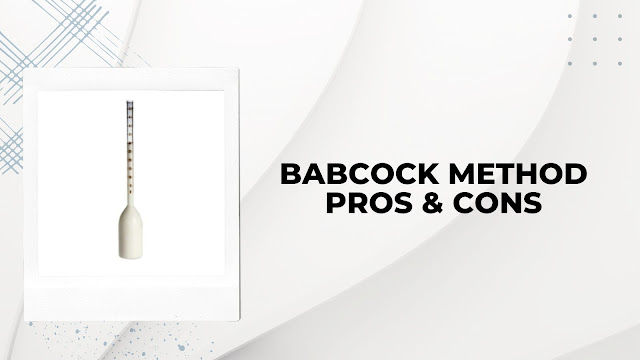What is Babcock Method and Its Pros & Cons!
Demand for an easy test to assess milk quality emerged in the late 19th century in response to a growing interest in nutrition, pure foods, and truth in labeling. During that time, milk was sold by its weight. As a result, some farmers began to dilute their products or remove the cream from the top, punishing the sincere ones while introducing unpredictability into the milk supply for consumers. Professor Stephen M. Babcock (1843–1931) of the University of Wisconsin was tasked with coming up with a solution to this problem, and in 1890 he published the Babcock test with the help of Babcock bottles.
Older tests, however accurate in detecting milk-fat levels, were too time and money-consuming to be extensively used. Dairymen immediately adopted Babcock's test's straightforward, cost and time-efficient answer. The test served as an effective method for establishing fair milk pricing based on quality and a helpful tool for animal breeding. Farmers could breed their herds for better milk by consistently recording the amount of milk fat produced by each cow.
The need for inexpensive yet precise graduated test bottles, Babcock bottles, pipettes, and graduated cylinders to conduct the test increased along with the test's popularity. The test called for a standard-weight milk sample, to which the tester added precisely the right amount of sulfuric acid. With the exception of the fat, which floated to the top, the acid dissolved all of the milk's components. After heating and multiple centrifugal spins, the fat was caught in the bottleneck. To determine the percentage, the tester could read the graduations between which the fat dropped.
Advantages & Applications of the Babcock Method
- A very high steam-producing capacity of 20,000 to 40,000 kg/hr.
- The Babcock boiler has a low draught loss.
- It is possible to inspect while operating.
- The replacement of damaged tubes is simple.
- The Babcock boiler's components may all be inspected, cleaned, and repaired.
- You can circulate water quickly.
- Extremely rapid steaming. This boiler can swiftly raise the water's temperature, making it perfect for accommodating unforeseen demands.
- Due to the fact that the water tube and drum are not permanently attached to the brick wall, the thermal cycle can expand and contract freely.
- Unlike other boilers, it can produce dry steam with a high capacity even when the feed water supply is inadequate.
- Efficiency ranges from 60 to 80%.
- Less floor area is needed per unit of power compared to the fire tube boiler.
Disadvantages of the Babcock Method
- This boiler requires clean water that is free of silt and pollutants. It is essential to treat the water.
- The tube may overheat and explode as a result of contamination.
- Must maintain the ideal water level inside the drum. Even a minor interruption in the water supply can result in severe issues overheating.
Conclusion
Jade Scientific, Inc. gives you exceptional flexibility, quickness, and resourcefulness in your sector. We provide over 100,000 high-quality laboratory supplies such as Babcock bottles, test tubes, stirrers, etc., chemicals, furnishings, and equipment to the industrial and scientific markets.




Comments
Post a Comment